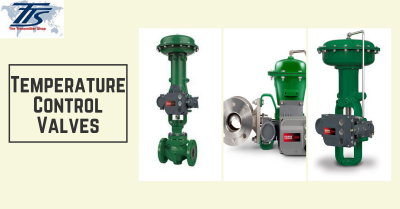Innovative Control Valves: Enhancing Accuracy and Reliability
Innovative Control Valves: Enhancing Accuracy and Reliability
Blog Article

Maximize Energy Savings and Comfort With Advanced Structure Automation Controls
In the world of contemporary architecture and facility management, the integration of innovative building automation controls stands as a crucial advancement. The convergence of innovation and sustainability has birthed a brand-new period where energy efficiency, convenience optimization, and functional streamlining are no longer attainable truths however distant ambitions. By harnessing the power of automation, structures can adapt, respond, and evolve in ways that were as soon as unbelievable. The capacity for significant power savings and boosted comfort is not simply a promise but an opportunity waiting to be met. This paradigm change in building administration holds the vital to unlocking a world where ecological conscientiousness and passenger wellness sympathetically exist side-by-side within the walls of our structures.
Energy Efficiency Benefits
Energy effectiveness advantages can dramatically decrease power consumption and operational costs in structures. Energy-efficient systems, such as sophisticated structure automation controls, can maximize the use of resources like lighting, home heating, and cooling, leading to lower energy expenditures over time.
Additionally, enhanced energy performance can extend the lifespan of building tools and systems. By running extra efficiently, heating and cooling systems, light, and various other structure components experience much less deterioration, resulting in reduced maintenance and substitute prices. Additionally, energy-efficient structures usually regulate greater home values and rental rates, offering long-term monetary advantages to owners.
Furthermore, power efficiency can enhance occupant comfort and efficiency. Effectively managed indoor atmospheres with optimum lights and thermal problems develop an even more favorable and enjoyable work space, causing boosted employee contentment and performance. On the whole, the energy efficiency advantages linked with innovative structure automation controls are multifaceted, including expense financial savings, environmental stewardship, and occupant wellness.
Improved Convenience Control
Enhancing convenience control in structure environments calls for an innovative assimilation of innovative automation systems for optimal occupant well-being. By utilizing sophisticated building automation controls, centers can customize the indoor atmosphere to meet the specific demands and preferences of owners. control valves.
By integrating these advanced controls, structures can not just enhance convenience yet additionally improve energy performance by maximizing system procedures based on actual tenancy and usage patterns. Eventually, prioritizing resident comfort with innovative automation systems leads to a more delightful and much healthier interior atmosphere.
Operational Performance Improvements

In addition, the application of real-time surveillance and analytics devices makes it possible for structure operators to recognize power inadequacies and functional anomalies quickly. By continuously keeping an eye on energy use patterns and system performance metrics, adjustments can be made in real-time to optimize power usage and make certain peak functional effectiveness. control valves. In addition, integrating need action approaches into building automation controls can additionally boost functional efficiency by dynamically readjusting power usage based upon grid problems and rates signals
Indoor Climate Optimization
Reliable indoor climate optimization is a fundamental facet of structure automation controls, making sure passengers' convenience and wellness while taking full advantage of energy savings. By using innovative sensing units and controls, developing automation systems can continuously change and keep track of temperature level, moisture degrees, air quality, and air flow to develop an optimal interior setting. Maintaining constant and comfortable conditions not just enhances passenger contentment yet likewise enhances productivity and overall well-being.
Interior climate optimization also plays an essential duty in power efficiency. By fine-tuning air flow, cooling, and home heating systems based on real-time data and tenancy patterns, building automation controls can considerably decrease power consumption - control valves. For instance, applying strategies such as demand-controlled ventilation and thermal zoning can aid minimize power waste while ensuring that each location of the structure obtains the essential conditioning.

Lasting Setting Development
Building automation manages not only enhance indoor environment conditions for power performance and passenger convenience yet additionally lay the foundation for developing a sustainable environment with calculated monitoring of resources and systems. By incorporating advanced building automation technologies, such as sensing units, actuators, and smart software program, facilities can adjust and monitor energy use in real-time to minimize waste and reduce their carbon footprint. These systems make it possible for anticipating maintenance, determining possible problems prior to they intensify and maximizing devices performance to improve longevity and performance.
In addition, sustainable environment creation expands beyond energy administration to include water conservation, waste decrease, and interior air high quality renovation. Structure automation controls can control water usage, discover leakages, and guarantee correct waste disposal techniques, contributing to overall sustainability efforts. In addition, by managing and monitoring air flow and filtration systems, these technologies improve occupant wellness and efficiency while lowering energy consumption linked with cooling and heating procedures.
Conclusion
Finally, advanced building automation controls deal considerable benefits in regards to power savings, comfort control, operational performance, indoor environment optimization, and developing a sustainable environment. By implementing these controls, buildings can attain optimal performance while decreasing power usage and boosting resident convenience. It is obvious that the use of innovative automation technology is vital in enhancing structure performance and developing a much more lasting future.
Energy effectiveness advantages can considerably reduce power intake and operational expenses in structures. Overall, the energy effectiveness benefits associated with innovative structure automation controls are multifaceted, incorporating price financial savings, ecological stewardship, look these up and occupant wellness.
Furthermore, including demand feedback techniques right into building automation controls can even more boost operational performance by dynamically adjusting energy use based on grid conditions and pricing signals.
Structure automation controls not only optimize indoor environment problems for energy effectiveness and passenger comfort however likewise lay the structure for creating a sustainable setting via strategic management of systems and sources.In verdict, advanced structure automation controls offer significant benefits in terms of energy Look At This cost savings, convenience control, operational effectiveness, indoor climate optimization, and developing a sustainable setting.
Report this page